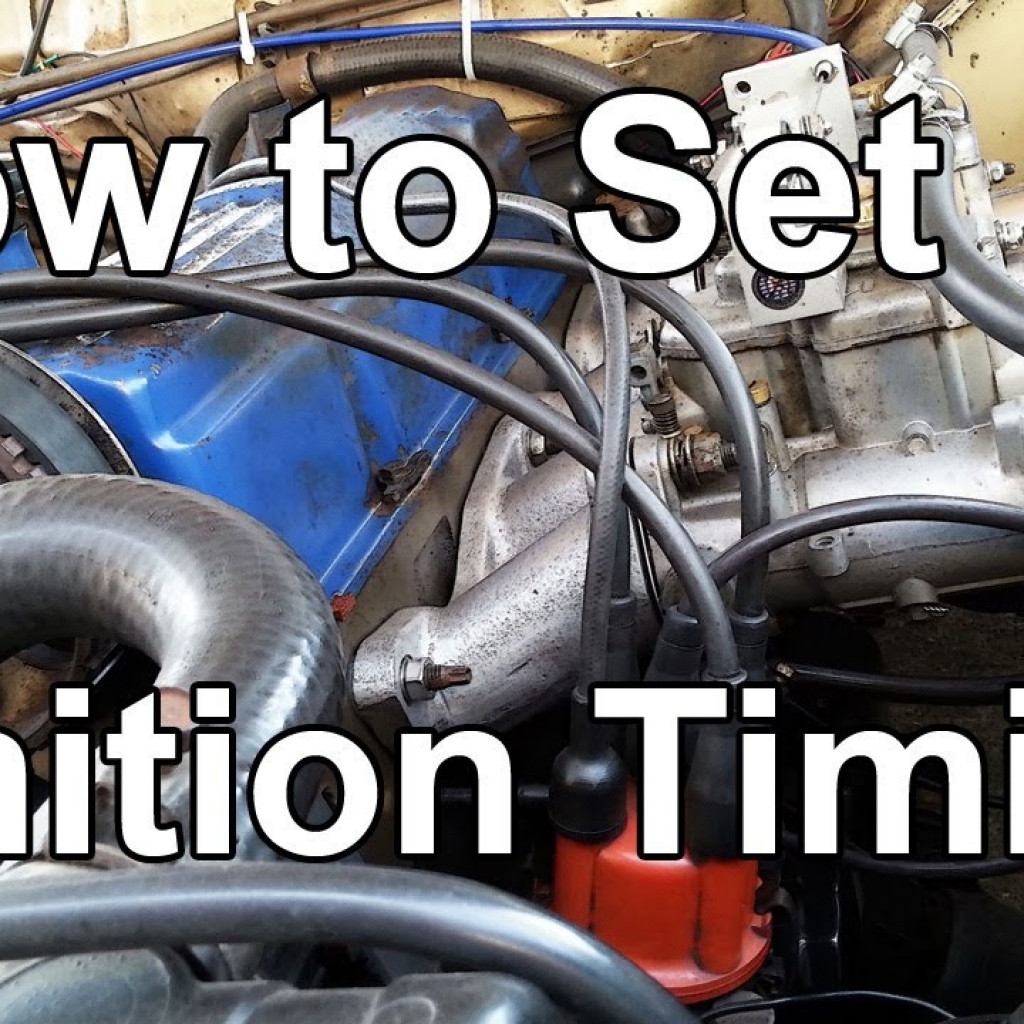Precision timing is crucial for optimal engine performance. While a timing light is the preferred tool for setting timing, there are times when one may not be readily available. Fortunately, with some ingenuity and a few simple tools, you can adjust ignition timing without a timing light.

Image: hnnakaka.blogspot.com
Before embarking on this task, it’s essential to understand the basics of ignition timing. Ignition timing refers to the point at which the spark plug ignites the air-fuel mixture in the combustion chamber. Setting the correct timing ensures the engine produces maximum power and runs smoothly.
**Determining the Correct Timing:**
Refer to your vehicle’s service manual to determine the correct ignition timing for your engine. This value is typically expressed in degrees before top dead center (BTDC), or the point at which the piston is at the top of its compression stroke.
Once you know the correct timing, you’re ready to proceed with the manual adjustment process.
**Method 1: Using a Dial Indicator Gauge**
This method requires a dial indicator gauge, a calibrated tool that measures very small movements. Connect the gauge to the spark plug hole and rotate the crankshaft manually until the piston is at TDC. Set the dial indicator to zero.
Continue rotating the crankshaft in the direction of rotation until the dial indicator reads the specified BTDC value. At this point, adjust the distributor or the crankshaft position sensor to align the timing marks on the engine.
**Method 2: Using a Vacuum Gauge**
A vacuum gauge measures engine vacuum and can be used to set ignition timing indirectly. Connect the gauge to the intake manifold and start the engine. Slowly adjust the timing until you achieve the highest possible vacuum reading.
Be sure to note that this method may not be as accurate as using a timing light or a dial indicator gauge, but it can provide a reasonable approximation of the correct timing.

Image: smoothpole.weebly.com
**Tips for Successful Timing Adjustment:**
**1. Ensure Accuracy:** Use a high-quality timing tool and double-check your measurements to ensure precision.
**2. Optimize the Engine:** Make sure the engine is in good running condition before adjusting timing. This includes clean spark plugs, wires, and a properly functioning ignition system.
**3. Use a Reference Mark:** Scratch a reference mark on the distributor and engine block to help you keep track of the adjustment.
**4. Incremental Adjustments:** Make small, incremental adjustments to the timing and observe the engine’s response. Avoid making large changes that may cause engine damage.
**FAQ:**
Q: Can I set the timing on any vehicle without a timing light?
A: While the methods described above can be used on most vehicles, it’s always recommended to consult a professional mechanic or refer to the specific instructions for your vehicle.
Q: How often should I check the ignition timing?
A: Ignition timing should ideally be checked whenever major engine work is done, such as a spark plug replacement or a timing belt change.
Q: What are the signs of incorrect ignition timing?
A: Incorrect timing can manifest as difficulty starting, rough idling, reduced engine power, or increased fuel consumption.
How To Set Timing Without A Timing Light
**Conclusion:**
Adjusting ignition timing without a timing light is possible with some dedication and proper techniques. By following the steps outlined in this article and implementing the tips provided, you can optimize your engine’s performance and ensure a smooth and efficient ride.
Are you ready to embark on the journey of adjusting ignition timing without a timing light? Let us know in the comments below!